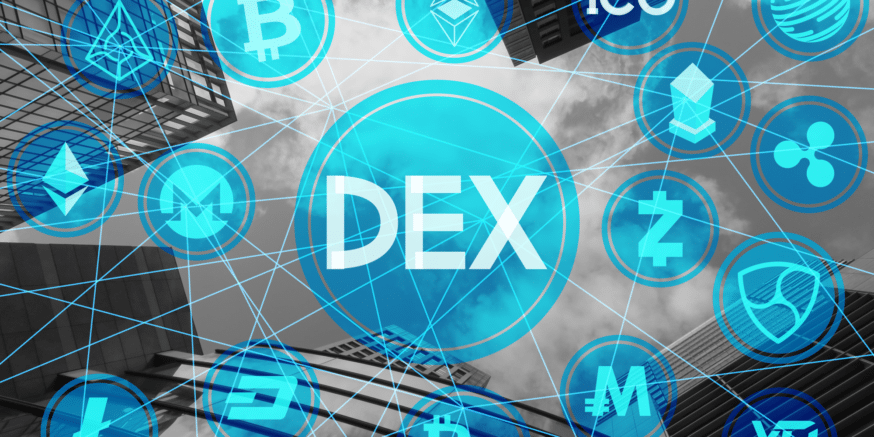
The landscape of financial markets has been changing over the past decade as digital assets take the centre stage in modern-day finance. While Bitcoin still remains the most popular crypto asset, the emergence of smart contract blockchains such as Ethereum and Solana has given rise to an entirely new ecosystem dubbed Decentralized Finance (DeFi). At the core, DeFi operates on the principles of decentralization, transparency and verifiability.
With DeFi gaining popularity, crypto natives are shifting from centralized exchanges (CEXs) to decentralized exchanges (DEXs). A recent report by Chainalysis revealed that the on-chain volume in DEXs between April 2021 to April 2022 eclipsed that of CEXs, with the former recording $225 billion while CEXs accounted for $175 billion. As it stands, the share of on-chain volume between these two ecosystems is evenly split.
“Today, their share of on-chain volume is more evenly split, with 55% happening on DEXs and 45% on CEXs.” read the report.
So, why are DEXs becoming the go-to platforms for crypto investors? First and foremost, DEXs are designed as permissionless protocols which means that anyone can access DeFi markets without limitation. Additionally, the pressure by regulators has forced many crypto stakeholders to consider self-custody by trading through DEXs. As most diehards would say; not your keys, not your crypto.
The Evolution of DEXs
Despite being around for only a few years, DEXs are evolving faster than most people can keep up. In the early DeFi days, prominent DEXs such as Uniswap and Sushiwap were only available on the Ethereum blockchain. This has since changed following the debut of cross-chain and bridging solutions; today, crypto investors can operate on a DEX like Sushiswap and access various blockchain ecosystems without leaving the protocol.
Meanwhile, some DEXs like SOMA.finance have introduced compliance in the DeFi industry by partnering with Tritaurian Capital, an SEC and FINRA-regulated crypto brokerage. This globally compliant multi-asset DEX offers tokenized equities, STOs, ETFs and native crypto assets. With SOMA.finance, crypto users can access the featured assets while remaining compliant, a challenge that has been a big barrier for institutional investors.
Coming down to the fundamental infrastructure, stakeholders have been looking for alternatives to the Automated Market Model (AMM), which has often been criticized for failing to deliver on liquidity. Well, it seems that the experiments are gradually yielding fruit; we now have DEXs like Blueshift that are building a more elaborated AMM model based on liquidity portfolios. In this model, liquidity is held in the form of portfolios instead of trading pairs.
More importantly, AMM liquidity portfolios make it easier for DeFi users and LPs to swap tokens. For example, the Blueshift DEX creates virtual pairs upon a swap request by removing the required liquidity from the larger portfolio. Once the transaction is done, the virtual pair is erased and the price is updated in the internal oracle. This approach reduces price slippage and impermanent loss which are often caused by liquidity crunches.
As we can see from these developments, it is quite obvious that the DEX environment is finally leveling up to address the finer needs of the market. Besides swapping tokens, DeFi users also have an opportunity to increase their passive income through protocols like Aurigami, which operates as a decentralized money market protocol for the Aurora ecosystem. Deposit rates can range between 8% to 12%, much better than what is offered by traditional banks.
Wrap Up
In its current state, the DeFi market is yet to unlock its maximum potential. More people than ever before are craving for a financial ecosystem that is not controlled by governments or centralized financial institutions. This being the case, it is not surprising that savvy crypto investors now prefer trading through decentralized protocols where they can remain in control of their assets and do not have to undergo rigorous KYC procedures.
Looking into the future, signs on the wall show that even the long-standing traditional institutions will likely change their tone in favour of DeFi markets. In fact, the paradigm shift is already happening, with legacy banks such as JP Morgan planning to bring trillions of dollars into DeFi through tokenization. Speaking to Coindesk, the bank’s head of Onyx Digital Assets lauded the potential of scaling DeFi products to accommodate institutions:
“Over time, we think tokenizing U.S. Treasurys or money market fund shares, for example, means these could all potentially be used as collateral in DeFi pools. The overall goal is to bring these trillions of dollars of assets into DeFi, so that we can use these new mechanisms for trading, borrowing [and] lending, but with the scale of institutional assets.”



